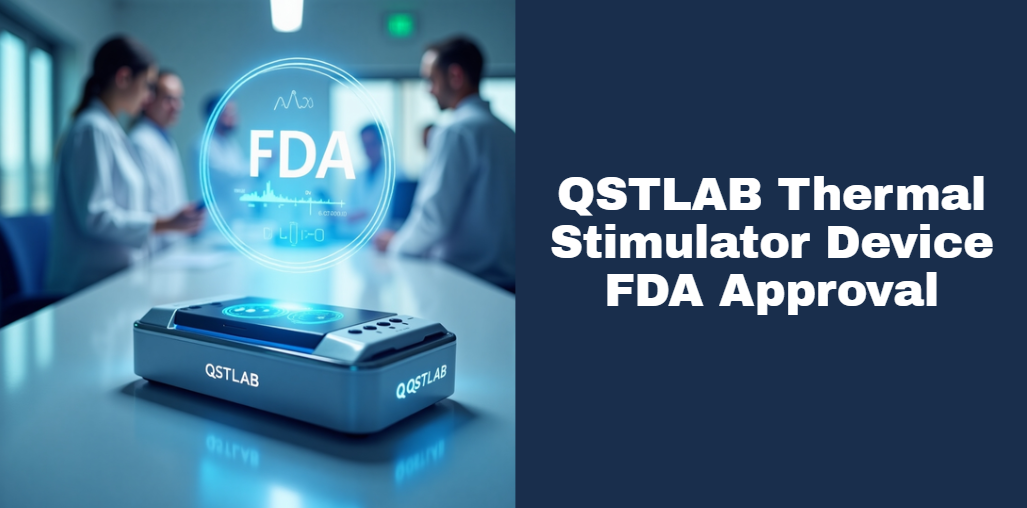QSTLAB Thermal Stimulator Device FDA Approval: Complete Guide for 2025
Thermal stimulation is an essential method used in neuroscience and pain studies, enabling researchers and clinicians to assess how the body responds to temperature-based stimuli. One of the modern devices in this category is the QSTLAB Thermal Stimulator Device. This tool is used for quantitative sensory testing (QST), a technique often employed in diagnosing and managing conditions related to sensory nerve dysfunction.
But a critical question arises for clinicians, researchers, and regulatory experts alike—what is the current status of the QSTLAB Thermal Stimulator Device FDA approval? In this comprehensive guide, we explore the device in detail, its intended uses, how FDA approval works for such devices, and what this means for those looking to use it in the United States.
Understanding the QSTLAB Thermal Stimulator Device
The QSTLAB Thermal Stimulator Device is engineered to deliver precise, controlled thermal stimuli to a person’s skin. It’s often used in neurophysiology labs or pain clinics to assess thermal thresholds for warm or cold sensations. This helps in diagnosing conditions like peripheral neuropathy, small fiber neuropathy, and central pain disorders.
Its functionality typically involves:
- Applying a thermode to the skin that can generate specific temperature changes.
- Measuring a subject’s response time and sensitivity to heat and cold.
- Recording data for further clinical or experimental analysis.
Devices like the QSTLAB Thermal Stimulator are commonly seen in research settings, especially in studies related to pain pathways, sensory processing, and neurological disorders.
In comparison, other thermal stimulators like Brainbox’s TCS II and Medoc’s Pathway CHEPS are already well-known in the field. However, what separates QSTLAB is its emphasis on precision, digital controls, and adaptability to various test protocols.
FDA Approval Process for Medical Devices
Understanding the FDA approval process is essential to comprehend whether a device like the QSTLAB Thermal Stimulator can be used in clinical practice within the United States.
Classification System
The U.S. Food and Drug Administration (FDA) classifies medical devices into three classes based on the risk they pose:
- Class I: Low risk (e.g., stethoscopes)
- Class II: Moderate risk (e.g., infusion pumps)
- Class III: High risk (e.g., pacemakers)
Thermal stimulator devices used for diagnostic purposes typically fall under Class II, which means they require a 510(k) clearance.
510(k) Premarket Notification
A 510(k) is a premarket submission made to the FDA to demonstrate that the new device is substantially equivalent to a legally marketed device already approved for the same use.
To gain 510(k) clearance, manufacturers must:
- Submit detailed technical and performance specifications.
- Provide data proving the device performs as expected.
- Show substantial equivalence to an existing FDA-cleared device.
De Novo Pathway
If there’s no existing device to compare with, the manufacturer may use the De Novo classification, which is typically more rigorous and involves longer timelines and detailed clinical evidence.
Current Status: QSTLAB Thermal Stimulator Device FDA Approval
As of 2025, there is no publicly available record in the FDA’s 510(k) or De Novo databases indicating that the QSTLAB Thermal Stimulator Device has received FDA clearance.
This does not necessarily mean the device is unsafe or ineffective. Rather, it may imply that:
- The device is intended for research use only, not clinical application.
- The manufacturer has not yet submitted it for FDA clearance.
- The device is used outside of the U.S. under different regulatory frameworks.
To validate this, a search through the FDA 510(k) Database reveals no entries for “QSTLAB Thermal Stimulator.”
Here’s a quick comparison table:
| Feature | QSTLAB Thermal Stimulator | Medoc Pathway CHEPS | Brainbox TCS II |
|---|---|---|---|
| FDA Approved | ❌ No | ✅ Yes | ❌ No |
| Clinical Use in U.S. | ❌ Not permitted | ✅ Permitted | ❌ Limited |
| Primarily for Research Use | ✅ Yes | ✅ Yes/Clinical | ✅ Yes |
| Thermal Precision (±0.1°C) | ✅ Yes | ✅ Yes | ✅ Yes |
| Custom Protocol Compatibility | ✅ Yes | ✅ Yes | ✅ Yes |
Clinical and Research Applications
Despite the lack of QSTLAB Thermal Stimulator Device FDA approval, the device is commonly used in academic and research laboratories. Its high precision and customizable protocols make it an excellent choice for:
- Neurological Sensory Studies – Researchers measure thermal perception thresholds.
- Pain Research – Investigators examine the role of heat/cold stimuli in pain pathways.
- Pharmaceutical Testing – Some drug trials require thermal response evaluation.
However, clinicians must be cautious about using the device for diagnostic or therapeutic purposes in the U.S. without proper FDA approval.
Safety and Compliance Considerations
Without FDA approval, it’s important to understand the limitations and risks associated with using the QSTLAB device in clinical settings:
- Not legally marketable for clinical use in the U.S.
- Insurance providers may not cover procedures involving unapproved devices.
- Clinical liability increases if non-approved devices are used in diagnostics or treatments.
If a practitioner wishes to use it under an Investigational Device Exemption (IDE), they must get appropriate regulatory and ethical approvals.
On the bright side, in controlled laboratory settings, the device poses minimal risk when handled by trained professionals, especially when adhering to manufacturer guidelines for skin contact, temperature ranges, and timing.
Conclusion
The QSTLAB Thermal Stimulator Device stands out as a modern, precise tool for thermal sensory testing. However, when it comes to QSTLAB Thermal Stimulator Device FDA approval, it currently lacks the clearance required for use in clinical settings in the United States.
This doesn’t diminish its value in the world of neuroscientific research and sensory evaluation, but it does place certain restrictions on its application. Researchers, clinicians, and healthcare institutions must consider the regulatory boundaries before integrating it into any diagnostic or patient-facing process.
Moving forward, it remains to be seen whether QSTLAB or its manufacturers will seek formal FDA approval. Until then, the device should be regarded as a research-only tool unless new regulatory updates emerge.
Recommended Articles
Coelocaliente: Embracing Warmth, Comfort, and Emotional Well-being in Everyday Life
Narissa Thelo Fitness-Talk.net Author: Complete Guide to Her Fitness Philosophy and Impact
Qiowofvuhoz: The Mysterious Concept Unveiled
Orannalaura: A Comprehensive Guide to Its Meaning, Influence and Multifaceted Role in Modern Culture






